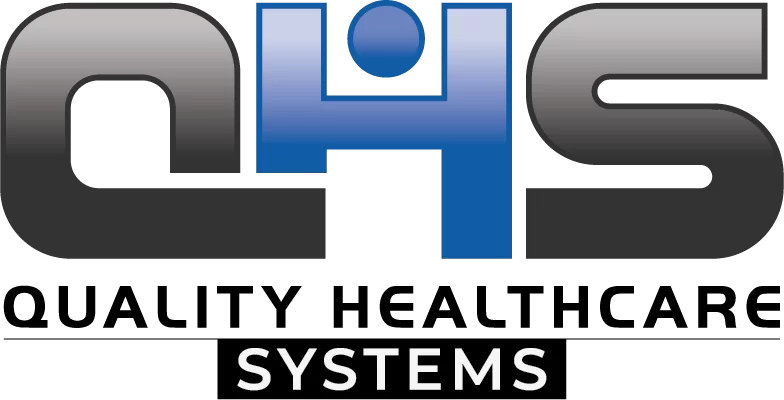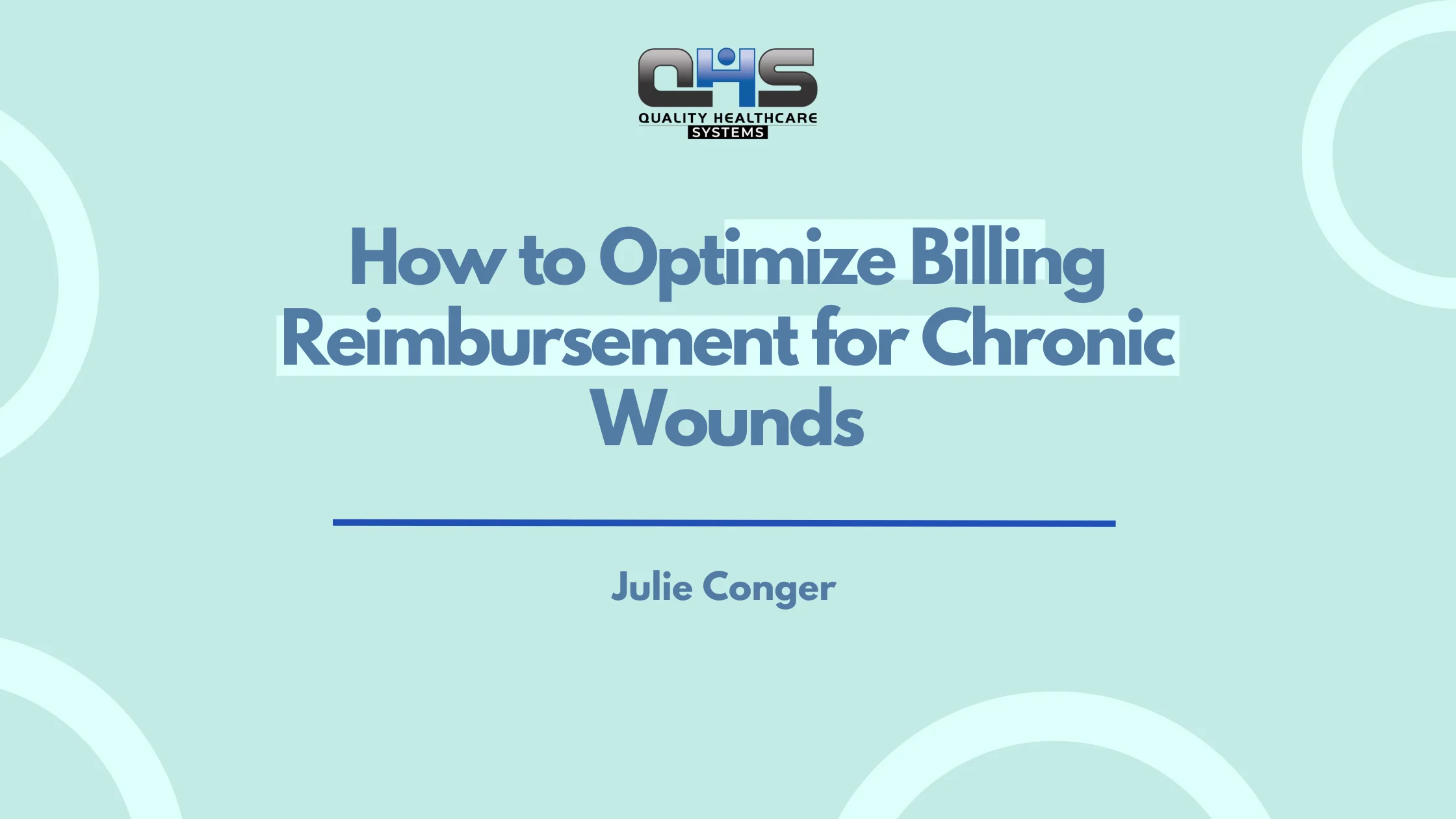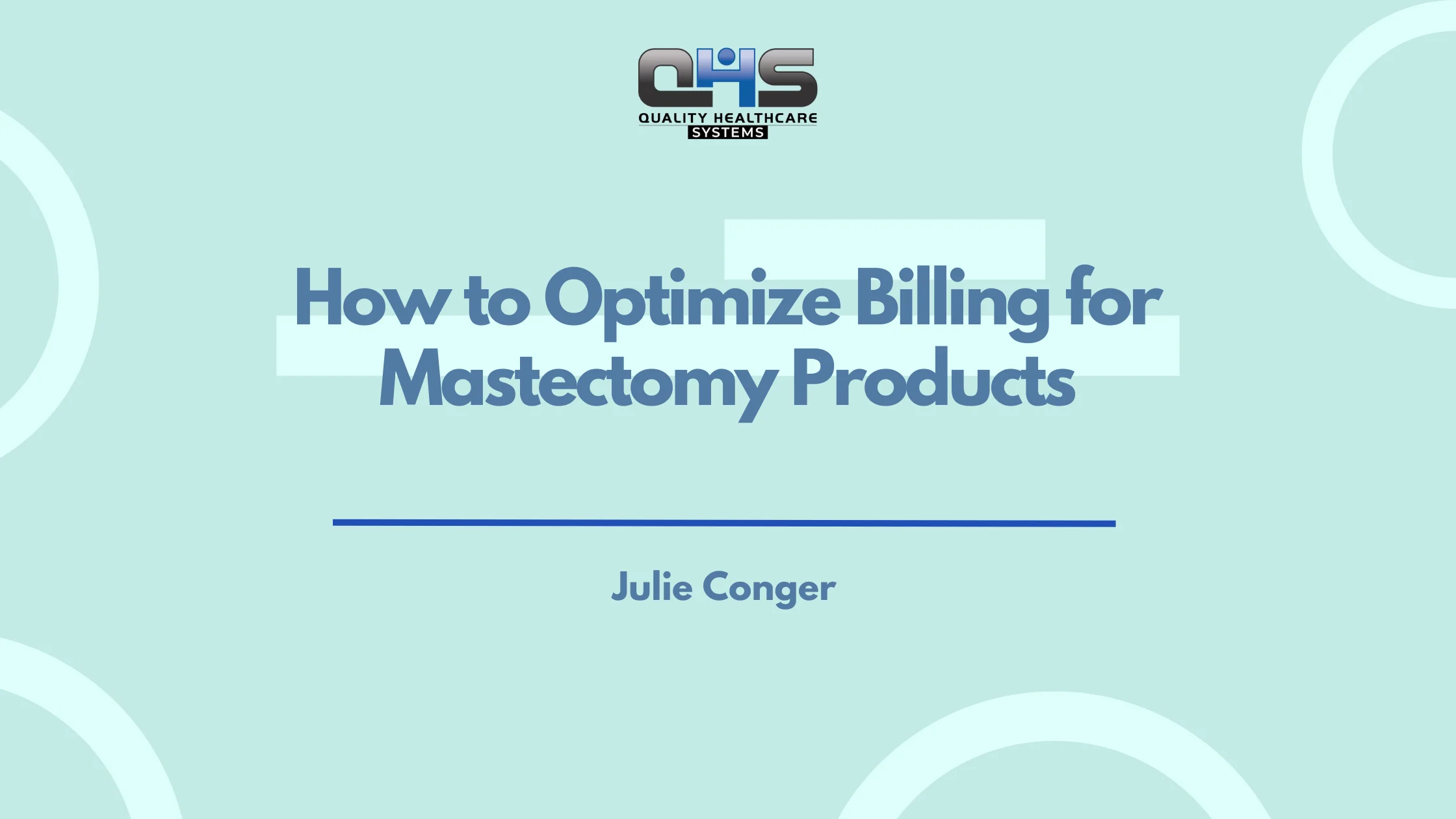Chronic wounds affect over 6.5 million patients in the United States, costing the healthcare system an estimated $25 billion annually. With the rise of diabetic ulcers, pressure sores, and post-surgical wounds, healthcare providers are facing more complex reimbursement challenges.
Despite advancements in wound care, billing denials and underpayments continue due to improper coding, lack of documentation, and payer-specific nuances.
This blog provides a comprehensive breakdown of how to bill for chronic wound care effectively under Medicare, with a focus on HCPCS code G0465, the correct use of ICD-10 diagnosis codes, and best practices for documentation, compliance, and interdisciplinary coordination.
What Is Chronic Wound Management?
Chronic wounds are defined as wounds that fail to proceed through an orderly and timely process to produce anatomic and functional integrity within three months. Effective chronic wound management involves:
-
Wound debridement
-
Infection control
-
Offloading and pressure reduction
-
Nutritional optimization
-
Use of cellular and/or tissue-based products (CTPs) for wound healing
These advanced therapies, particularly CTPs for chronic wounds, are frequently used in outpatient settings and must be accurately billed to Medicare using the appropriate codes and modifiers.
Step-by-Step Guide to Optimize Chronic Wound Billing and Medicare Reimbursement
Follow this structured process to ensure accurate documentation, coding, and compliance, helping healthcare providers maximize Medicare reimbursement for chronic wound treatment and avoid billing denials.
Step 1: Confirm Patient Eligibility & Medical Necessity
-
🔸 1.1 Assess wound type (e.g., diabetic ulcer, pressure injury, venous ulcer)
-
🔸 1.2 Document wound duration (>30 days)
-
🔸 1.3 Identify comorbidities like Type 2 diabetes or vascular disease
Step 2: Evaluate the Need for Advanced Wound Therapy
-
🔸 2.1 Determine if standard treatments have failed
-
🔸 2.2 Select appropriate Cellular and/or Tissue-based Product (CTP)
-
🔸 2.3 Justify clinical necessity for skin substitute application
Step 3: Assign the Correct HCPCS Code
-
🔸 3.1 Use G0465 for:
“Application of skin substitute graft to wound surface area, including debridement and cleaning”
Step 4: Use Accurate ICD-10 Diagnosis Codes
-
🔸 4.1 Include:
-
✔️ 1 code for underlying condition (e.g., E11.621 – DM with ulcer)
-
✔️ 1 code for wound type/location (e.g., L97.411 – chronic foot ulcer)
-
-
🔸 4.2 Avoid unspecified or incomplete ICD-10 codes
Step 5: Document Clinical Details Thoroughly
-
🔸 5.1 Record wound specifics (size, depth, location, drainage, tissue type)
-
🔸 5.2 Include before/after measurements and wound progression
-
🔸 5.3 Explain rationale for choosing CTP (why conservative care failed)
Step 6: Submit a Clean Claim with Accurate Codes
-
🔸 6.1 Link correct ICD-10 codes to G0465
-
🔸 6.2 Apply appropriate modifiers (e.g., for multiple wounds/sites)
-
🔸 6.3 Confirm date of service, units, provider info, and medical necessity
Step 7: Use Technology for Compliance & Efficiency
-
🔸 7.1 Use EHR wound templates for standard documentation
-
🔸 7.2 Enable automated code suggestions via CAC tools
-
🔸 7.3 Include wound images when allowed by your system
Step 8: Stay Medicare-Compliant and Audit Ready
-
🔸 8.1 Review local and national coverage determinations (LCDs/NCDs)
-
🔸 8.2 Retain documentation for a minimum of 7 years
-
🔸 8.3 Conduct regular internal compliance checks and staff training
Step 9: Collaborate with the Care Team
-
🔸 9.1 Coordinate with wound care nurses, PCPs, and specialists
-
🔸 9.2 Ensure all providers document aligned notes in the EHR
-
🔸 9.3 Promote continuity of care and consistent treatment planning
Step 10: Consider a Dedicated Wound Care Billing Partner
-
🔸 10.1 Partner with specialized billing services for:
-
Accurate coding
-
Denial prevention
-
Appeals handling
-
Reimbursement tracking
-
Understanding HCPCS Code G0465 for Chronic Wounds
Medicare HCPCS code G0465 is defined as:
“Application of a skin substitute graft to a wound surface area; full-thickness or epidermal, including cleaning and debridement, when performed.”
This code is specifically used to bill for the application of skin substitutes or CTPs in chronic wound care. It’s typically billed per session and is commonly used in the following scenarios:
-
Diabetic foot ulcers requiring biological dressing
-
Venous stasis ulcers treated with CTPs
-
Pressure injuries that fail to heal with conservative measures
ICD-10 Codes Required with G0465: Documenting Medical Necessity
Billing G0465 without appropriate ICD-10 diagnosis codes will lead to claim denials. Medicare requires two specific diagnosis codes to justify medical necessity:
-
E11.621 – Type 2 diabetes mellitus with foot ulcer
-
L97.411 – Non-pressure chronic ulcer of right heel and midfoot with breakdown of skin
(Or similar based on wound type and location)
Always include:
-
One ICD-10 code for the underlying condition, e.g., diabetes
-
One ICD-10 code for the wound or ulcer, specifying type, location, and severity
What Does Reimbursement for Chronic Wound Care Involve?
Reimbursement for chronic wound care involves billing for a wide range of services including wound assessment, debridement, dressing changes, skin grafts, and application of negative pressure wound therapy (NPWT). Payers require that every billed service is:
- Medically necessary
- Accurately documented
- Correctly coded with CPT/HCPCS codes
Chronic wounds are defined as wounds that fail to progress through the normal healing process. These include:
- Pressure ulcers
- Diabetic foot ulcers
- Venous stasis ulcers
- Non-healing surgical wounds
Billing for these conditions requires precise coding that reflects the wound’s complexity, size, depth, and treatment method used. Providers must also report whether care was delivered in an office, home health, hospital outpatient, or skilled nursing facility (SNF), as this impacts reimbursement.
How Do Payers Define Medical Necessity for Wound Treatments?
Medical necessity is a foundational concept in wound billing. Payers evaluate whether the services rendered are appropriate and necessary based on the patient’s condition. A service is deemed medically necessary if it:
- Is essential for the diagnosis or treatment of a wound
- Aligns with accepted standards of medical practice
- Cannot be omitted without negatively affecting outcomes
To meet these standards, your documentation must clearly include:
- Type of wound and how long it has persisted
- Previous treatment history and patient compliance
- Current wound status (infected, granulating, necrotic)
- Planned interventions and expected outcomes
Example: For a venous leg ulcer that has been non-healing for 30 days despite standard compression therapy, your record should justify escalation to NPWT and explain how this improves wound bed preparation for a skin graft.
Which CPT and HCPCS Codes Are Commonly Used for Chronic Wounds?
Precise coding determines whether you receive full reimbursement. Below are CPT and HCPCS codes most relevant for chronic wound care billing:
| Procedure | Code | Description |
|---|---|---|
| Debridement, skin only | 97597 | Selective debridement of epidermis/dermis |
| Debridement, subcutaneous tissue | 11042 | Includes skin and subq. tissue |
| Debridement, muscle and/or fascia | 11043 | Involves muscle layer |
| Debridement, bone | 11044 | Includes skin to bone |
| NPWT (wound < 50 cm2) | 97605 | Vacuum-assisted closure device |
| NPWT (wound > 50 cm2) | 97606 | Large area vacuum therapy |
| Skin substitutes (biologic grafts) | Q4101-Q4211 | Bioengineered skin products |
| Dressing supplies | A6212-A6258 | Foam, alginate, hydrocolloid dressings |
When coding, also reference:
- ICD-10 diagnosis codes (e.g., L97.213 – Non-pressure chronic ulcer of right calf with necrosis)
- Modifiers to clarify services (see below)
Avoid upcoding or undercoding, both of which can trigger audits or payment delays.
How Should Wound Debridement Be Documented for Maximum Reimbursement?
Wound debridement is one of the most frequently billed—and denied—procedures. To maximize reimbursement and reduce denial risks, documentation must clearly demonstrate qualifying documentation elements for CPT 11042 and related codes. Your clinical notes should include:
-
Anatomical location and laterality (e.g., right foot, medial calf)
-
Size of the wound before and after debridement (measured in cm)
-
Extent of tissue removed during debridement, specifying depth and type (e.g., slough, necrotic tissue, eschar)
-
Method of debridement used (e.g., sharp, autolytic, enzymatic, or mechanical)
-
Clinical justification for debridement services, especially when selecting one method over another
-
Assessment of the wound bed post-procedure, noting any changes or improvement
Incorporating wound imaging and digital measurement tools can further validate the extent of tissue removal and improve claim defensibility. This level of precision not only supports accurate coding but also strengthens your case during audits and appeals.
What Modifiers Should Be Used in Wound Care Billing?
Modifiers play a crucial role in clarifying billing scenarios and ensuring proper reimbursement for multiple procedures. In wound care, proper use of modifier 59 in wound billing and other relevant modifiers is essential to avoid confusion and denials. The following modifiers are key in wound care billing:
-
Modifier 25 – Used when an E/M service is provided in addition to a procedure (e.g., office visit + debridement). Ensure documentation supporting modifier 25 clearly distinguishes the separate service from the procedure to justify its use.
-
Modifier 59 – Indicates a distinct, separate service. This is commonly used when treating wounds on different limbs or performing multiple wound care procedures. Unbundling prevention using wound modifiers is critical to avoid improper bundling and ensure accurate billing.
-
RT/LT – Specifies the side (right/left) of the body where the wound is located, ensuring clarity for payer processing.
-
Modifier GZ – Used when a service is likely to be denied due to lack of medical necessity, often accompanying Advanced Beneficiary Notices (ABNs) when it’s anticipated that the procedure won’t meet payer criteria.
To minimize risk of denials during payer audits, ensure your documentation justifies the use of each modifier by including specific details about the wound, procedure, and the medical necessity of each service provided.
Related Posts:
- How to Bill for Transtibial (Below-Knee) Prosthetics?
- What Are the Coding Requirements for Transfemoral (Above-Knee) Prosthetics?
- What Documentation Is Required for Myoelectric Arm Prosthetics Reimbursement?
Can Chronic Wound Treatments Be Billed in Facility vs. Non-Facility Settings?
Yes, the site of service plays a critical role in determining reimbursement rates for chronic wound treatments. Billing differential in outpatient wound settings varies significantly based on whether the care is provided in a facility or non-facility environment, due to differing cost structures and reimbursement policies.
-
Hospital Outpatient Department (HOPD): In a facility setting, the technical components are billed by the facility, while the provider bills for the professional service. Understanding the place of service code for wound care is essential to ensure accurate coding and reimbursement for these distinct components.
-
Office Setting: In a non-facility setting, a global bill is submitted that includes both the technical and professional components. This can simplify the billing process for providers but requires correct identification of the place of service.
-
Skilled Nursing Facility (SNF): For wound care services provided in a Skilled Nursing Facility, certain treatments may be bundled into the daily rate unless specifically carved out. Providers should be aware of the SNF exclusion list for wound procedures, as some services may not be separately reimbursed unless explicitly excluded from the bundle.
How to Handle Denials and Appeals for Wound Care Claims?
Denials can be successfully appealed by following a structured approach. Chronic wound care denial appeal processes are common, but with careful attention to detail and correct documentation, providers can improve their chances of success.
Common Reasons for Denial:
-
Insufficient documentation of wound size/depth – Ensure accurate measurements of the wound are consistently documented, including pre- and post-treatment sizes.
-
Exceeding frequency limits for debridement – Check that the frequency of treatments adheres to payer guidelines and that medical necessity is clearly documented.
-
Missing modifiers – Ensure all relevant modifiers, such as modifier 25 or modifier 59, are included to clarify services provided.
Steps to Appeal:
-
Review denial code and payer notes – Identify the reason for the denial and gather any information on what was lacking or misunderstood.
-
Pull the medical record and confirm what was submitted – Ensure all relevant details, such as wound assessments and treatment plans, are included.
-
Write a detailed appeal letter that explains medical necessity – Craft a medical necessity rebuttal for wound services, detailing why the treatment was required and appropriate.
-
Attach supporting records – Include additional documentation, such as wound photos, visit notes, and records of previous treatments, to substantiate your claim.
-
Submit within the payer’s specified time frame – Ensure that all appeals are submitted on time to avoid automatic denial.
Consider creating a sample appeal letter template for CPT 11043 and similar procedures to improve turnaround times for appeals. Having a library of templates will streamline the appeal process and ensure consistency in how medical necessity is articulated.
What Are Medicare-Specific Rules for Chronic Wound Billing?
Medicare follows Local Coverage Determinations (LCD policy for wound debridement) established by each Medicare Administrative Contractor (MAC). These policies outline the rules for reimbursement and ensure that services provided meet Medicare’s criteria for medical necessity. To avoid claim denials, it’s crucial to adhere to the specific requirements set out by each LCD.
Each LCD policy for wound debridement includes:
-
Covered services and CPT/HCPCS codes: These define the specific procedures eligible for reimbursement, including the appropriate use of codes like CPT 11042 for debridement.
-
Frequency guidelines: Medicare often limits the frequency of services. For example, Novitas LCD L35125 allows debridement every 7 days, assuming the documentation supports the medical need.
-
Required documentation: To justify reimbursement, providers must ensure the following key documentation:
-
Wound measurements: Accurately record the size of the wound before and after debridement (in cm) to demonstrate progress.
-
Type and amount of tissue removed: Specify the tissue types (e.g., necrotic, slough) and the extent of removal during the debridement procedure.
-
Plan for continued care: Detail the treatment plan following debridement, outlining the next steps for healing or further intervention.
-
To stay compliant, follow the Medicare documentation checklist for chronic ulcers, ensuring that wound care details align with ICD-10 and CPT alignment for Medicare wound billing.
How to Bill for Advanced Wound Products Like Grafts and NPWT?
Advanced wound care procedures, such as skin substitutes and Negative Pressure Wound Therapy (NPWT), require detailed documentation and accurate coding to ensure proper reimbursement. These treatments, including products like Apligraf, Dermagraft, and KCI VAC, are often used for chronic or complex wounds that do not respond to standard wound care.
When billing for advanced wound care products:
-
Use appropriate Q-codes for the product: Different skin substitutes and NPWT devices have specific Q-codes that must be used to accurately represent the products being billed.
-
Specify wound location, size, product used, and coverage rationale: Ensure that your documentation includes critical details such as:
-
The location and size of the wound
-
The product used (e.g., Apligraf or KCI VAC)
-
A clear rationale for coverage explaining why the advanced product is necessary for the patient’s wound healing process
-
-
Document patient education and follow-up: This includes providing the patient with education on how to care for their wound, as well as documenting any follow-up care plans.
For NPWT billing specifically, include the following key details:
-
Negative pressure settings: Document the pressure levels used during therapy.
-
Dressing change schedule: Clearly note the frequency of dressing changes as part of the treatment plan.
-
Provider supervision: Indicate the level of provider supervision or involvement in administering NPWT.
Additionally, be aware of specific chronic wound graft reimbursement rules, which can vary by payer. NPWT coding requirements also require strict adherence to ensure reimbursement for this highly specialized treatment.
When billing for these advanced products, it’s essential to understand how to bill for skin substitute application and ensure all necessary coding and documentation is included for smooth reimbursement processes.
Are Telehealth Wound Care Visits Reimbursable?
Yes, telehealth wound care visits are reimbursable, but only for specific types of follow-up care. CMS (Centers for Medicare & Medicaid Services) permits telehealth for the following wound care services:
-
Reviewing wound progress: Assessing healing and any changes in the wound.
-
Adjusting dressings: Providing guidance on how to manage dressings remotely.
-
Counseling on wound care: Educating the patient on proper care techniques.
When billing for telehealth visits in wound care, it’s essential to use the following:
-
Modifier 95 to indicate that the service was provided via telehealth.
-
Place of Service (02) to show that the visit was conducted remotely.
Additionally, photos or videos of the wound must be documented to support the visit. Ensure remote wound documentation requirements are met by capturing clear, accurate images, and obtaining patient consent for telehealth services, as part of compliance with telemedicine regulations.
Telehealth is particularly beneficial in telemedicine for chronic wound management, as it allows for efficient monitoring and adjustments without the need for frequent in-person visits. However, make sure to follow Medicare telehealth wound follow-up rules, which include restrictions on the types of services and conditions under which telehealth visits can be reimbursed.
How to Train Your Staff to Improve Chronic Wound Billing Accuracy?
Training is essential for reducing billing errors and improving collections. To ensure your staff is well-prepared and compliant, follow these best practices:
-
Conduct monthly coding audits: Regular audits help identify and address any inconsistencies in coding practices. Utilize audit tools for chronic wound claims to evaluate the accuracy of your coding and ensure compliance with reimbursement guidelines.
-
Use real case examples in training: Incorporating actual case scenarios into your training sessions provides practical insights and reinforces correct billing practices for chronic wound care.
-
Offer CEUs in wound care coding: Continuing Education Units (CEUs) in wound care coding, accredited by organizations like AAPC and AHIMA, are vital for keeping your team up to date with the latest coding rules and guidelines.
-
Encourage certifications: Certifications like Certified Wound Care Coder (CWCC) and Certified Wound Specialist (CWS) help validate your team’s expertise and commitment to accurate billing practices.
Additionally, focus on clinical documentation improvement in wound care, ensuring that all documentation supports the services billed, including wound measurements, treatment details, and medical necessity. Well-trained staff will be better equipped to handle the complexities of chronic wound billing and minimize the risk of denials.
Conclusion: What’s the Best Way to Stay Compliant and Maximize Payment?
To ensure full reimbursement and avoid costly delays, it’s essential to follow these best practices for chronic wound care billing:
-
Document wounds thoroughly: Ensure that all required measurements, images, and clinical details are accurately recorded to support reimbursement.
-
Use precise CPT/HCPCS codes and appropriate modifiers: Proper coding ensures that your services are correctly represented and reduces the likelihood of denials.
-
Follow Medicare LCDs or payer-specific rules: Stay updated with Local Coverage Determinations (LCDs) and payer guidelines to ensure compliance with reimbursement requirements.
-
Train staff and conduct internal audits regularly: Consistently training your team and performing internal audits can help identify gaps in billing and improve overall accuracy.
At Quality Healthcare Systems, we understand the complexities of chronic wound care billing. By integrating these practices into your workflow, we help you optimize your chronic wound care revenue cycle, reduce denials, and improve patient outcomes. Trust our expert solutions to ensure you’re always compliant and maximizing payment for the services you provide.





